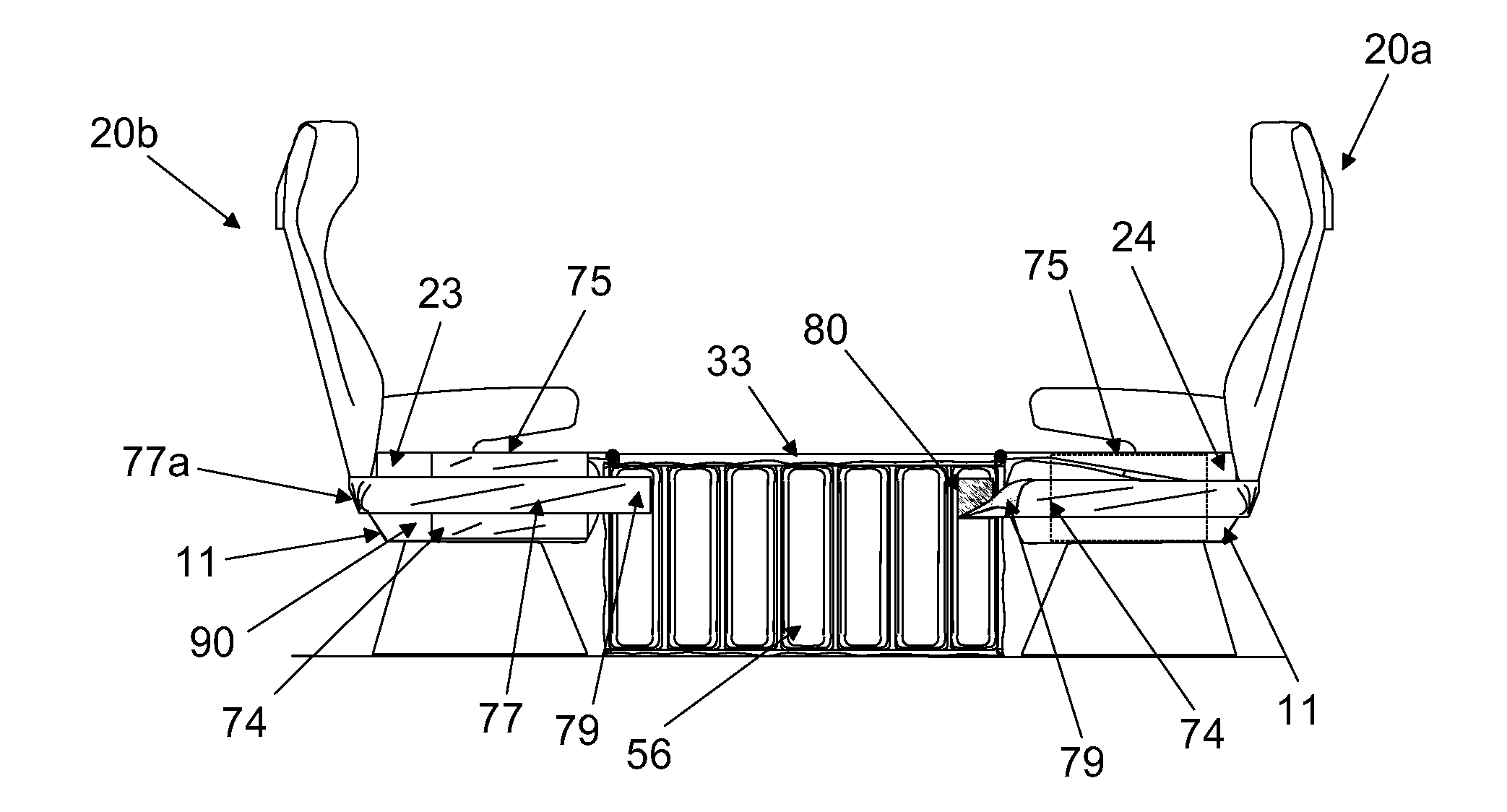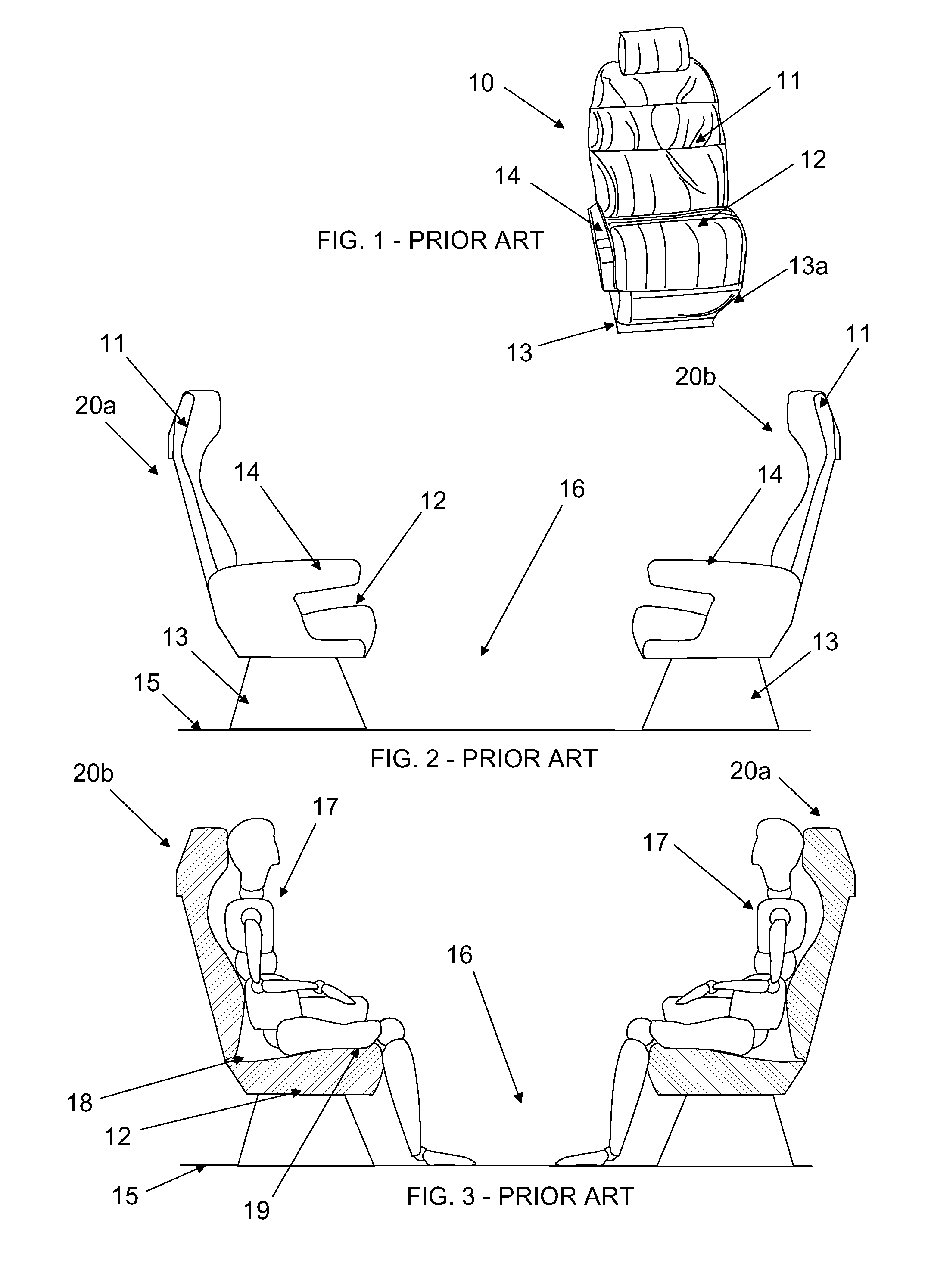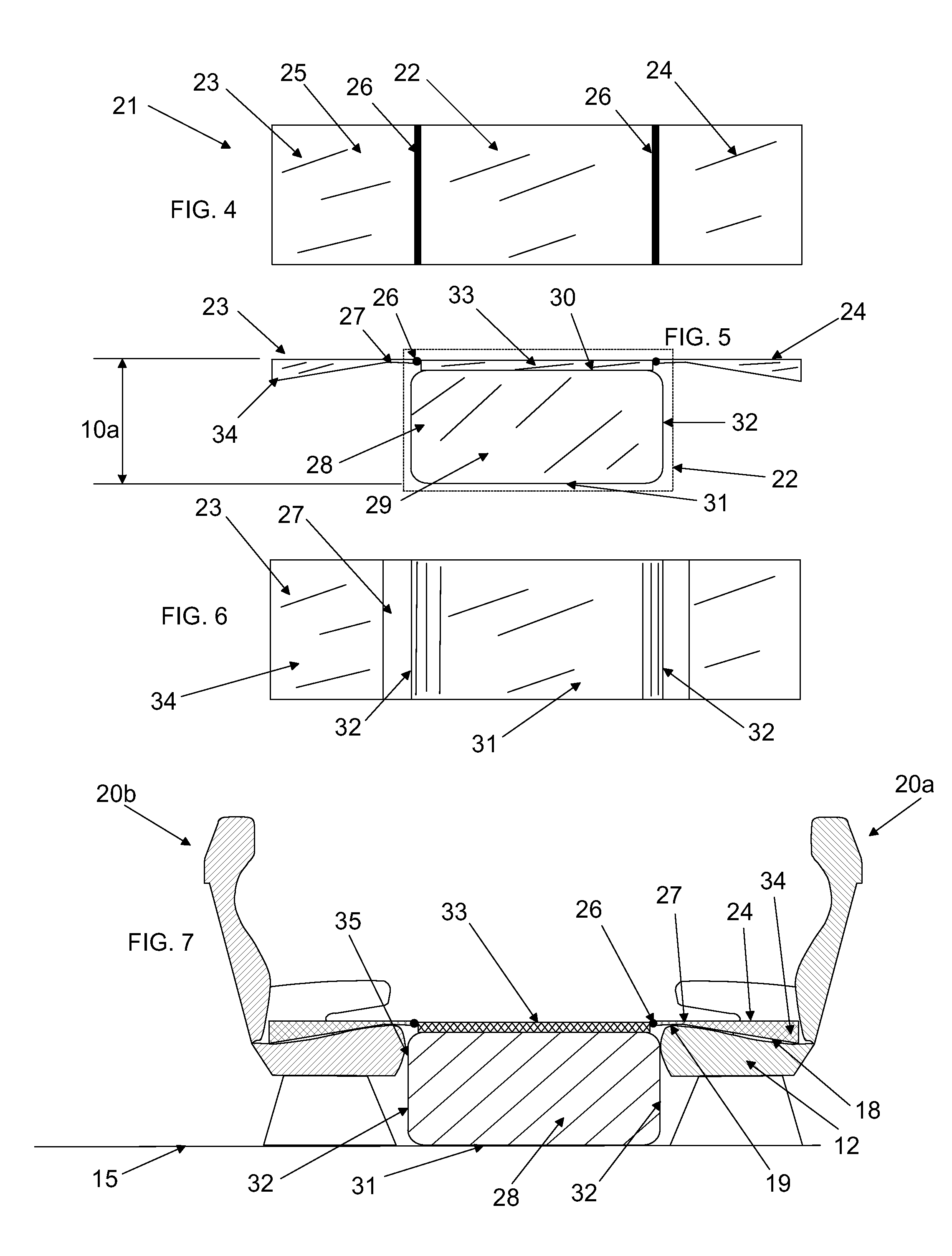Bed formed from face to face chairs
- Summary
- Abstract
- Description
- Claims
- Application Information
AI Technical Summary
Benefits of technology
Problems solved by technology
Method used
Image
Examples
embodiment 21
[0048]FIGS. 4, 5, and 6 are, respectively, top, side and bottom views of one embodiment 21 of center section 22 comprising a foundation block 28 and a top pad 33 attached to cover a top surface 30 of the foundation block 28. Foundation block 28 comprises a top surface 30, a bottom surface 31, end walls 32 and side walls 29. Filler pads 23 and 24 are connected by a rotatable connection 26 to a top edge zone of center section 22, where filler pads 23 and 24 are rotatable about an axis formed by connection 26. Connection 26 preferably comprises a connection of fabric covering filler pads 23 and 24 to fabric covering top pad 33. Filler pads 23 and 24 each comprise a thickened back section 34 and a thinner front edge section 27. Filler pads 23 and 24 are about a width of seat cushions upon which they will be supported. Top pad 33 is about the width of the filler pads 23 and 24. Elevation 10a is a height from the bottom surface 31 of foundation block 28 to a substantially co-planar set of...
embodiment 100
[0054]FIG. 16 is the invention embodiment 100 having the center section 22 and filler pads 23 and 24 of FIG. 4 with the addition to two lateral extensions 74 and two flexible belts 77 for securing a center section 22 to the seats shown in FIGS. 2 and 3. Lateral extensions 74 are connected by flexible, rotatable connection 75 to a side edges of filler pads 23 and 24. Flexible belts 77 are connected at a connection end 78 to side wall 22a of center section 22. Belts 77 are adapted to extend around right and left sides and back sides of facing seats to which the invention assembly 100 will be engaged to form a bed surface, where a releasable attachment ends 79 are adapted to be fixed to attachment sections 80 shown on side wall 22a of center section 22. FIG. 17 is a top perspective view of a portion of the foundation block 53 of FIGS. 11, 12 and 13 showing an connection end 78 connected with layers 63 at stitching 82 and with belt 77 at stitching 83 and attachment section 80 on side wa...
PUM
 Login to View More
Login to View More Abstract
Description
Claims
Application Information
 Login to View More
Login to View More - R&D
- Intellectual Property
- Life Sciences
- Materials
- Tech Scout
- Unparalleled Data Quality
- Higher Quality Content
- 60% Fewer Hallucinations
Browse by: Latest US Patents, China's latest patents, Technical Efficacy Thesaurus, Application Domain, Technology Topic, Popular Technical Reports.
© 2025 PatSnap. All rights reserved.Legal|Privacy policy|Modern Slavery Act Transparency Statement|Sitemap|About US| Contact US: help@patsnap.com



